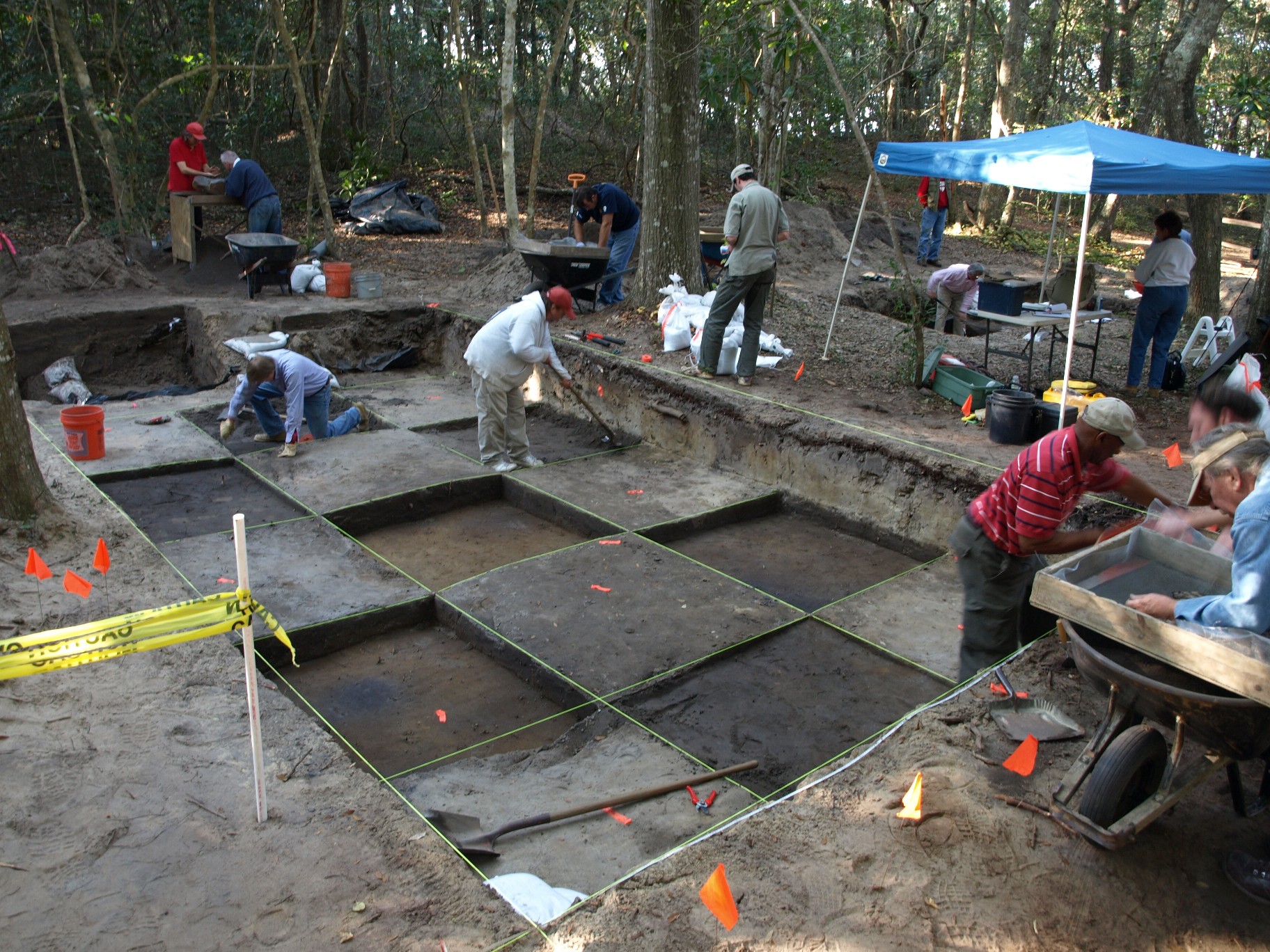|

NPS Photo
Contact: Doug Stover, 252-473-2111 Ext. 153 Contact: Phil Evans, 919-767-1050 The First Colony Foundation and the National Park Service announced today the completion of the 2009 archaeological research dig at Fort Raleigh National Historic Site on Roanoke Island near Manteo, North Carolina. Fort Raleigh NHS is the site of America’s first English colony, established in the 1580s.
The recent excavation areas nearly double the area of 16th century land surface opened for study and research at Roanoke Island. The most important discoveries of the excavation once again came near the project’s end. The archaeologists dug into the subsoil, and extending beyond the excavation trench, they discovered a one-foot wider linear trench feature with soil stains consistent with palisaded enclosures found at other early colonial sites. First Colony Foundation Research Vice Presidents and co-project directors Eric Klingelhofer and Nick Luccketti cautioned that further excavation is necessary to fully determine the character and extent of this promising feature.
The excavation recovered other European and America Algonquin artifacts, including two additional white Venetian glass beads, a Native American bone bead, lead shot and flint, ceramic flask and Iberian olive jar shards, numerous shards of Algonquin pottery from the late Woodland Period, and several pieces of Roanoke native pipe stems. One pipe stem has decorations on each side of a flattened bottom.
Soil fill in a nearby feature only partially excavated in 2008 contained what appear to be two copper aglets, commonly used to form the tips of laces on Elizabethan style clothing. These were found where thirteen Venetian glass beads and a similar aglet were earlier uncovered. Venetian glass beads were frequently used in trade between European explorers and American natives in the 16th and 17th centuries. The ceramic flasks were of a type archaeologists believe were made in northern France and were exported empty to England for use as early canteens.
Just a few feet away a complete necklace of thirteen, one-inch square, European copper plates was excavated in 2008. Copper was an important trade item for Algonquin leaders, who eagerly exchanged food resources for what they viewed as high status ornaments. This necklace was on exhibit at Fort Raleigh visitor center during the 2009 summer season and is now on display of the Museum of the Albemarle in Elizabeth City, North Carolina.
“We feel confident we are getting yet another important look into the archaeological record of the Roanoke colonies,” said First Colony President Phil Evans.
The First Colony Foundation (FCF), established in 2004 to investigate the Elizabethan colonies on Roanoke, undertook the archaeological project under the co-direction of Dr Eric Klingelhofer, Professor of History at Mercer University, and Nicholas Luccketti, President of the James River Institute for Archaeology. The Foundations plans to continue its research in the spring of 2010.
In late 2006, FCF excavated in an area northeast of the earthwork fort reconstructed in 1950. Coastal erosion had exposed several 16th-century artifacts in the area over the past two decades. Research there concluded that the area was a focus of Elizabethan activity, but settlement remains do not appear to survive there.
The digging in 2008 and 2009 has been concentrated in a wooded area covered with sand deposits and dunes two hundred yards northwest of the earthwork. Beneath topsoil and two to five feet of sand, the team exposed the old ground surface, which appears to have been buried by windblown or waterborne sand in the late 18th century. This layer is proving to yield 16th-century type Indian and European potsherds, as well as some later historic artifacts. Noteworthy in 2008 were a “Carolina blue” glass bead that matched a type found earlier at the earthwork fort site and on display in the visitor center, nails, and part of an iron knife. Archaeologists also uncovered an Indian red clay tobacco pipe much like the one illustrated in a 1590 engraving of an Indian man and woman seated on a mat and eating a meal. For more information, see www.firstcolonyfoundation.org. |
Last updated: April 14, 2015
